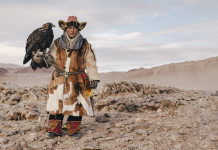The origins of the ubiquitous game of strategy, chess, lie in an instructional military model used in ancient India to plan battles. This model made use of non-distinct terracotta figures that simulated the four (in Sanskrit, “catur”) divisions (“anga”) of ancient Indian armies – chariots, horsemen, elephants, and soldiers on foot. Asian Geographic traces the evolution of the game of chess through the ages.

One of the first gaming pieces – a war
elephant (bishop) resting on its knees,
protected by chain mail[/icon_timeline_item][icon_timeline_item time_title=”300 BC” title_font_color=”#dd0000″]
References to the term caturanga as the four wings of the army go back to before 300 BC
[/icon_timeline_item][icon_timeline_item time_title=”560 – 579 AD” title_font_color=”#dda44d”]
King Sarvavarman Maukhari from Kanauj in India sent the game to the Persian king Chosrow I Anushirvan. This model used pieces made of ruby and emerald
[/icon_timeline_item][icon_timeline_item time_title=”625 AD” title_font_color=”#dd0404″]
The Harshacarita is one of the earliest allusions to the game of caturanga in India, played on a planogram using terracotta figures
[/icon_timeline_item][icon_timeline_item time_title=”720 AD” title_font_color=”#dda44d”]
Chess spread across the Islamic world from Persia. The Persian exclamation “Shah Mat!” (literally, “the king is helpless”), led to the phrase “checkmate”
[/icon_timeline_item][icon_timeline_item time_title=”800 AD” title_font_color=”#dd0000″]
 The first written reference to Chinese chess (xiangqi) appeared in the Book of Marvels. The pieces are placed on the intersection of the lines of the board
The first written reference to Chinese chess (xiangqi) appeared in the Book of Marvels. The pieces are placed on the intersection of the lines of the board
[/icon_timeline_item][icon_timeline_item time_title=”9th Century” title_font_color=”#dda44d”]
The Arabs introduced the game to Western Europe in the ninth century
[/icon_timeline_item][icon_timeline_item time_title=”10th Century” title_font_color=”#dd0000″]
Muslims carried chess to North Africa, Sicily and Iberia. Chess reached Russia from Byzantium and via the Vikings
[/icon_timeline_item][icon_timeline_item time_title=”11th Century” title_font_color=”#dda44d”]
Ferdowsi, a renowned Persian poet, describes in the Shahnameh an Indian king who reenacted past battles on a chessboard
[/icon_timeline_item][icon_timeline_item time_title=”13th Century” title_font_color=”#dd0000″]
Around 1262, the Russian word for chess, shakhmaty, was introduced
[/icon_timeline_item][icon_timeline_item time_title=”16th Century” title_font_color=”#dda44d”]
Shogi was spawned when xiangqi was brought to Japan between the 10th and 12th centuries. The present form of shogi was played from the 16th century
[/icon_timeline_item][icon_timeline_item time_title=”1851″ title_font_color=”#dd0000″]
 The first modern chess tournament was held in London
The first modern chess tournament was held in London
[/icon_timeline_item][/icon_timeline]
Check out the rest of this article in Asian Geographic No.110 Issue 2/2015 here or download a digital copy here




![The Road to Independence: Malaya’s Battle Against Communism [1948-1960]](https://asiangeo.com/wp-content/uploads/2021/07/WhatsApp-Image-2021-07-26-at-11.07.56-AM-218x150.jpeg)






